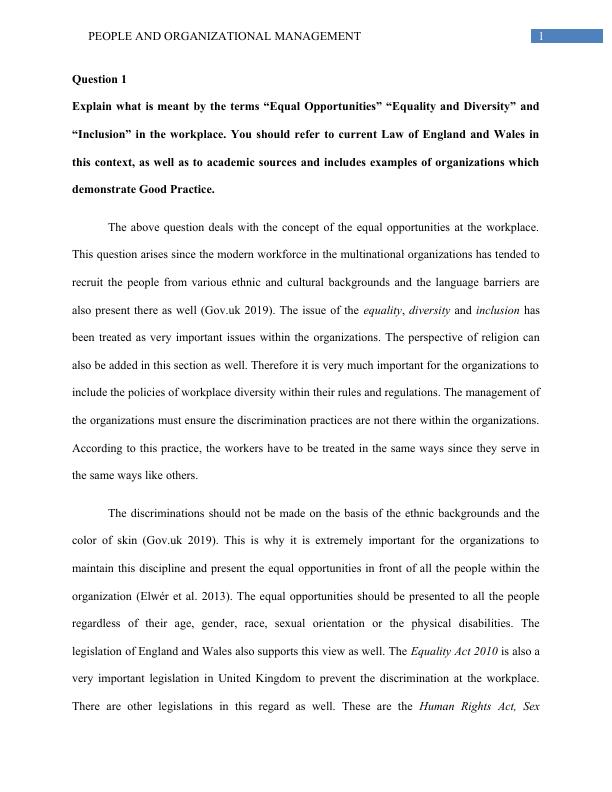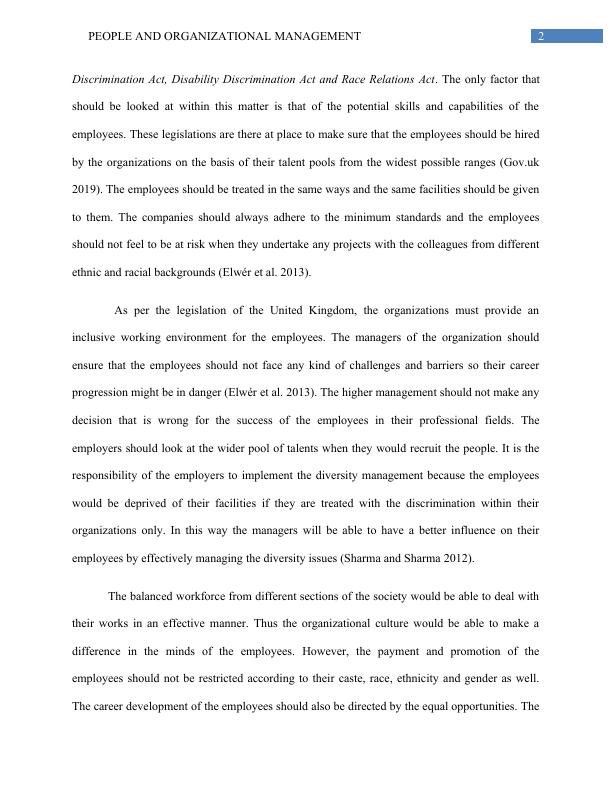Equality, Diversity & Inclusion in the Workplace
Added on 2022-05-09
About This Document
Equal opportunity means that all people should be treated the same, without judgement. Organisations that appreciate and understand the different skills available within its workforce can become employers of choice. A diverse and inclusive workplace is one that makes everyone, regardless of who they are or what they do for the business, feel equally involved in and supported in all areas of the workplace. A workplace encouraging equality, diversity and inclusion can help: make it more successful. keep employees happy and motivated. prevent serious or legal issues arising, such as bullying, harassment and discrimination. Get the below given document to know all about Equal Opportunities Equality and Diversity and Inclusion in the Workplace.
Equality, Diversity & Inclusion in the Workplace
Added on 2022-05-09
End of preview
Want to access all the pages? Upload your documents or become a member.




